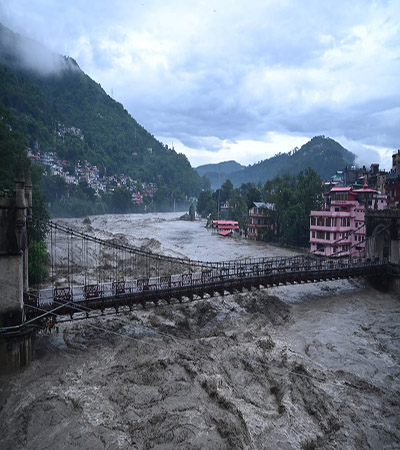MANDI: Researchers at IIT Mandi have teamed up with INRIA in France to develop cutting-edge AI algorithms for accurately predicting the structural health of bridges and other structures.
This breakthrough has been published in two scientific journals, Mechanical Systems and Signal Processing, and Neural Computing and Applications.
In India, there are about 13,500 bridges crucial for infrastructure, and they naturally deteriorate over time due to environmental factors and heavy traffic.
Traditional inspections relying on visual assessments have limitations, as they are subjective and time-consuming.
Thanks to advancements in instrumentation, data analysis, and AI tools like Deep Learning (DL), the monitoring of structural health has taken a significant leap forward.
These technologies make it possible to detect, measure, and predict defects more effectively, enabling better planning for repairs and maintenance, ultimately reducing costs and extending the lifespan of bridges.
IIT Mandi's research team has developed a DL-based approach that can identify structural damage by analyzing recorded dynamic responses without human intervention.
Dr. Subhamoy Sen from IIT Mandi explained that their approach employs Machine Learning, AI, and Bayesian statistical inference to estimate a bridge's health and predict its remaining usable life, reducing risks to infrastructure.
Temperature fluctuations, particularly in prestressed concrete and cable-stayed bridges, can impact a bridge's dynamic traits.
IIT Mandi's algorithm considers these effects and has been rigorously tested on a real bridge with extreme temperature swings, proving its effectiveness in damage detection.
In testing, the algorithm accurately pinpointed structural damage, both intentionally induced and naturally occurring.
According to IIT Mandi, advanced filtering techniques were used to assess the condition of structural components without direct measurements, allowing for a comprehensive evaluation of overall structural integrity.
These AI-based algorithms are not limited to bridges; they have broad applications in assessing the health of various structures, including ropeways, buildings, aerospace structures, transmission towers, and more.






